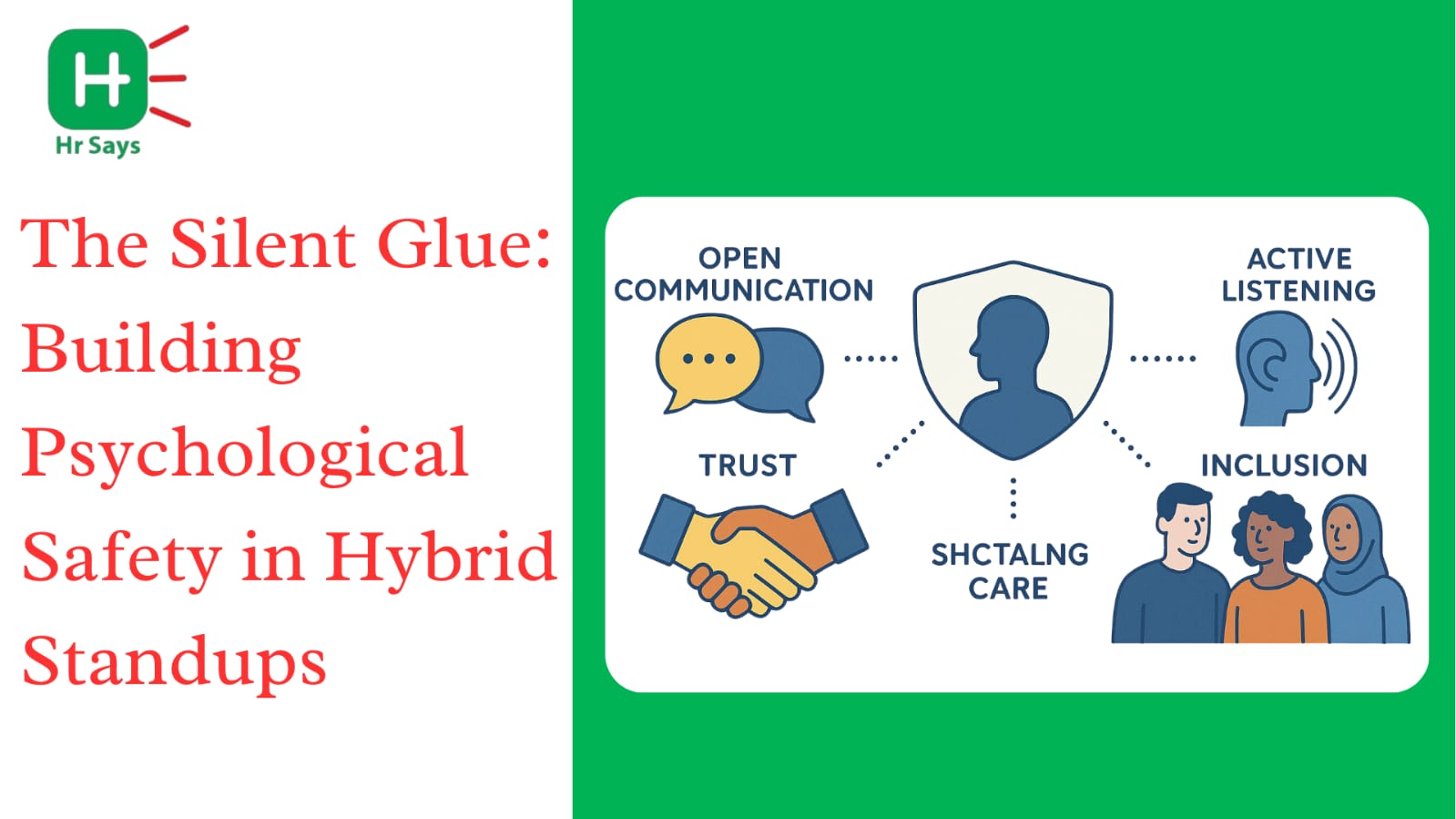Ever been in a standup where silence weighs heavier than updates? In hybrid settings, where physical and digital walls divide teams, that silence often grows. But what if the answer isn't louder voices—but safer spaces? Here's how to cultivate that.
The reason why Psychological Safety is not a buzz word
Psychological safety doesn’t mean being nice. It is all about being real.
In any team, people hesitate to speak up when they fear judgment. Hybrid setups only amplify that hesitation. Cameras off. Mics muted. Faces unreadable. The risk of misunderstanding or feeling invisible rises. That’s where safety steps in—not as a policy, but as a practice.
● It’s not about saying more.
● It’s about feeling okay to say anything.
● Without eye-rolls. Without side chats. Without risk.
Standups: More Than Status Checks
Originally a ritual of agility, standups weren’t built for screens. However, it does not exclude them to develop.
Nor are they merely check-ins, they are culture reflectors. A silent, rushed, or awkward standup says more about team dynamics than timelines. When people feel unsafe, updates sound robotic. When they feel trusted, real problems surface—and so do real solutions.
Signals of Safety—or the Lack of It
The Unsafe Hybrid Room Looks Like This:
● Only managers speak.
● Cameras stay off without discussion.
● Side calls happen after the meeting.
● Jokes land flat—or worse, exclude.
A Safer Hybrid Standup Feels Like This:
● Mistakes are shared without flinching.
● Even junior voices speak freely.
● Pauses are okay. No one rushes to fill them.
● A missed update leads to help, not heat.
Crafting Safety, One Ritual at a Time
Start With the Moderator
Every hybrid standup needs a culture-aware lead. Not just someone watching the clock—but
watching the room.
● They notice who hasn’t spoken in a few days.
● They invite, but never force.
● They read silence as a signal—not an offense.
Keep Cameras Optional, But Connection Mandatory
Don’t guilt people into being visible. Instead, build a room they want to show up in.
● Rotate who speaks first.
● Share something non-work every Friday.
● Begin with a 10-second “how I’m feeling” check.
Normalize the Imperfect
A slip-up, a missed deadline, or a fuzzy update? Treat it like a step—not a stain.
● Share personal learning stories as leaders.
● Model apology without defensiveness.
● Perceive near helplessness as feedback, as opposed to weakness.
A Non-obtrusive Type of Leadership
Psychological safety isn’t a campaign. It’s an everyday atmosphere. One that can’t be enforced, only enabled.
In hybrid standups, the loudest voice shouldn’t be the only one heard. It’s in the quiet nods, the patient pauses, the open “I don’t know”s where trust grows.
And sometimes, that’s all a team needs—to feel safe enough to speak.

 Hybrid standups can feel awkward, fragmented, or even silent. When teams split between screens and chairs, what holds them together? Psychological safety. Let’s explore how this quiet force shapes team trust—digitally and in person.
Hybrid standups can feel awkward, fragmented, or even silent. When teams split between screens and chairs, what holds them together? Psychological safety. Let’s explore how this quiet force shapes team trust—digitally and in person.












.jpeg)












.jpeg)